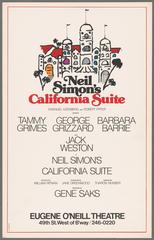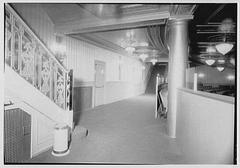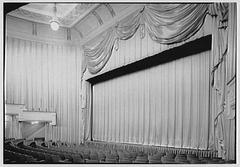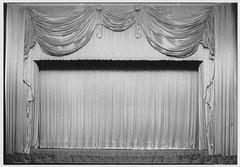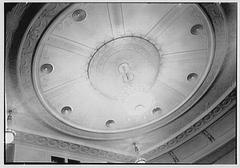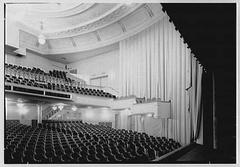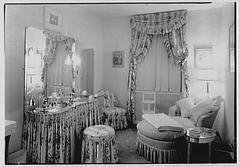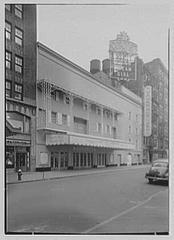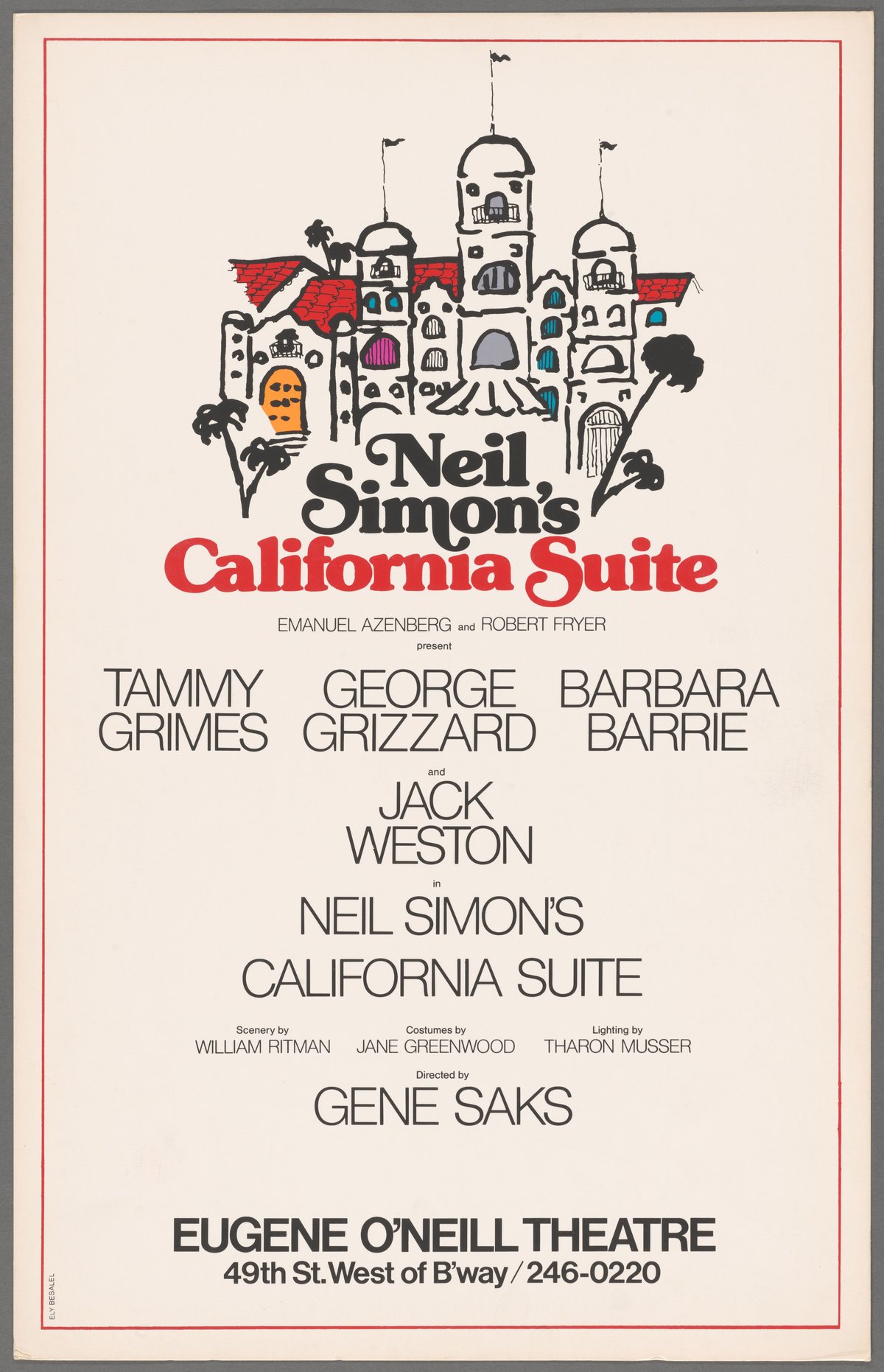
Eugene O’Neill Theatre Visiting Hours, Tickets, and Guide to New York City Historical Sites
Date: 14/06/2025
Introduction
The Eugene O’Neill Theatre, located in the heart of New York City’s legendary Broadway Theater District, is a landmark that seamlessly blends rich history, architectural distinction, and a tradition of theatrical excellence. Since its doors first opened in 1925—originally as the Forrest Theatre—the venue has mirrored the evolution of American theater, adapting to cultural shifts while preserving its architectural and historical integrity. Renamed in honor of Pulitzer and Nobel Prize-winning playwright Eugene O’Neill in 1959, it became the first Broadway house named for a playwright, symbolizing the enduring legacy of American drama.
Renowned for its ornate interiors, innovative steel frame construction, and prime Midtown Manhattan location, the Eugene O’Neill Theatre is a must-visit for theater lovers, history buffs, and first-time visitors alike. This comprehensive guide covers the theater’s fascinating history, notable productions, architectural highlights, visitor information—including updated visiting hours and ticket options—accessibility features, and practical travel advice. Whether you’re coming to see the Tony-winning The Book of Mormon or exploring New York’s cultural landmarks, the Eugene O’Neill Theatre promises a memorable Broadway experience.
For the latest show schedules and ticketing, visit the official Eugene O’Neill Theatre website or trusted ticket platforms. (Source 1, Source 2, Source 3)
Table of Contents
- Introduction
- Historical Overview
- Architecture and Preservation
- Notable Productions and Cultural Impact
- Visitor Information
- Frequently Asked Questions
- Conclusion
- References
Historical Overview
Origins and Early Years (1925–1945)
The Eugene O’Neill Theatre, at 230 West 49th Street, opened as the Forrest Theatre in 1925. Designed by Broadway’s prolific architect Herbert J. Krapp, the venue was part of a Shubert Organization expansion and was built alongside the Forrest Hotel, marking the city’s first theater-hotel complex. Among its pioneering features was the use of steel frame construction, a method then reserved for skyscrapers, which enabled a more open and ornate auditorium (TDF).
The inaugural production, Mayflowers, struggled to draw crowds, but the theater’s fortunes changed in the 1930s with Tobacco Road, which ran from 1933 to 1941, setting records as Broadway’s longest-running show of its era. The venue survived the Great Depression thanks to creative promotions—such as free coffee, cigarettes, and live entertainment in the adjacent hotel bar.
The Coronet Era (1945–1959)
In 1945, the theater underwent significant renovations and was renamed the Coronet Theatre. This modernization, led by architects Walker & Gillette, enhanced its appeal to new audiences and major productions. During this time, the venue continued to host a wide range of plays and musicals, further cementing its place in Broadway’s landscape.
Becoming the Eugene O’Neill Theatre (1959–Present)
A pivotal transformation occurred in 1959 when Lester Osterman acquired the theater, dedicating it to Eugene O’Neill—the first time a Broadway house was named for a playwright. This renaming was accompanied by further restorations, including unique celestial-themed artwork and pink cloud motifs on the auditorium ceiling, enhancing the theater’s distinctive ambiance. For a period, celebrated playwright Neil Simon owned the venue, premiering several of his works here. In 1982, Jujamcyn Theaters took ownership, preserving the landmark’s historic charm and updating facilities for modern audiences (TDF).
Architecture and Preservation
Herbert J. Krapp’s design exemplifies both innovation and grandeur. The Eugene O’Neill Theatre was the first Broadway venue to use steel frame construction, allowing for an unobstructed, ornate auditorium. The interior features elaborate decorative plasterwork, celestial murals, and a pink-cloud ceiling—hallmarks of Krapp’s lavish style (TDF). Technological advancements at opening included a state-of-the-art stage curtain and electrically powered scenery systems.
Today, the theater’s auditorium is a New York City landmark, with careful restorations maintaining its historic character amid modern upgrades.
Notable Productions and Cultural Impact
The Eugene O’Neill Theatre has hosted many influential productions:
- Tobacco Road (1933–1941): Set a Broadway record for longevity.
- M. Butterfly (1988): Tony Award for Best Play.
- Big River (1985): Tony Award for Best Musical.
- The Full Monty (2000): Musical adaptation of the British film.
- Spring Awakening (2006): Tony Award-winning rock musical.
- The Book of Mormon (2011–present): Tony Award-winning musical and one of Broadway’s most popular shows (Eugene O’Neill Theatre Events).
The theater’s programming mirrors Broadway’s changing tastes, from provocative dramas to innovative musicals, and continues to attract audiences from around the world.
Visitor Information
Visiting Hours
- Performance Days:
- Evenings: Tuesday through Sunday
- Matinees: Wednesday, Saturday, and Sunday
- The theater is generally closed (dark) on Mondays.
- Doors Open: Approximately 45 minutes before showtime (Eugene O’Neill Theatre FAQ).
- Box Office: Opens at 10:00 AM and remains open until curtain time on performance days.
Check the official schedule for specific dates and times.
Tickets and How to Buy
- Box Office: Located at 230 West 49th Street; open daily on show days.
- Online: Purchase tickets through the official website, authorized vendors, or reputable resellers (NYC Events - Eugene O’Neill Theatre Tickets).
- Discounts: Broadway lotteries, rush tickets, and special promotions may be available for select performances.
- Interactive Seating Charts: Available online to assist with seat selection.
Tip: For popular productions like The Book of Mormon, buy tickets well in advance.
Accessibility
- Wheelchair Access: Accessible seating is available in the Orchestra; the Mezzanine is only accessible by stairs.
- Restrooms: Located in the lower lounge; access requires descending steps.
- Assistive Listening Devices: Available upon request.
- Translation Services: GalaPro app offers translations in several languages for a nominal fee (TDF).
- Contact: For specific accessibility needs, contact the box office ahead of your visit.
Getting There and Nearby Attractions
- Address: 230 West 49th Street, New York, NY 10019
- Subway: N, Q, R, W (49th St.); 1, 2, 3 (50th St.); A, C, E (50th St.)
- Bus: M50, M7, M20, M104
- Parking: Multiple garages nearby; advance booking recommended (SeatPlan)
- Nearby Attractions: Times Square, Rockefeller Center, Museum of Modern Art, Bryant Park, and a wide selection of restaurants and cafes (Headout)
Visitor Tips
- Arrival: Arrive at least 45 minutes early for security and seating.
- Dress Code: No formal code; business casual is typical.
- Food and Drinks: Concessions available on-site; outside food and drink generally not allowed except for small water bottles.
- Photography: Prohibited during performances.
- Special Events: Occasional talkbacks and milestone celebrations; check the official website for updates.
- Guided Tours: Not regularly offered, but special events may include tours.
Frequently Asked Questions
Q: What are the Eugene O’Neill Theatre visiting hours?
A: Doors open 45 minutes before showtime; performances run Tuesday–Sunday with matinees on select days. Check the official schedule for details.
Q: How can I buy tickets?
A: Purchase at the box office, online through the official website, or trusted vendors. Early booking is strongly recommended.
Q: Is the theatre wheelchair accessible?
A: Yes, with accessible seating in the Orchestra; the Mezzanine is not elevator-accessible.
Q: Are outside food and drinks allowed?
A: Generally not, except for small sealed water bottles.
Q: Are guided tours available?
A: Regular public tours are not offered, but special events may occasionally include behind-the-scenes access.
Q: What are the best nearby attractions?
A: Times Square, Rockefeller Center, the Museum of Modern Art, and a variety of Midtown restaurants and shops.
Conclusion
A visit to the Eugene O’Neill Theatre offers more than just a Broadway show—it’s a journey through nearly a century of American theater history, architectural innovation, and cultural vibrancy. From its origins as the Forrest Theatre, through its evolution and renaming, to its current role as home to acclaimed productions, the venue exemplifies the spirit of Broadway. With thoughtful accessibility features, a welcoming atmosphere, and a prime location near New York’s top attractions, the Eugene O’Neill Theatre remains a must-see destination for theatergoers and history lovers alike.
For the latest information on visiting hours, tickets, and special events, consult the official Eugene O’Neill Theatre website. Enhance your Broadway adventure by downloading the Audiala app for seamless ticketing and exclusive insights. Follow us on social media for updates, offers, and behind-the-scenes content.
References
- Eugene O’Neill Theatre | TDF
- Official Eugene O’Neill Theatre Events
- NYC Events - Eugene O’Neill Theatre Tickets
- Eugene O’Neill Theatre FAQ
- SeatPlan Eugene O’Neill Theatre
- Headout Eugene O’Neill Theatre Guide
